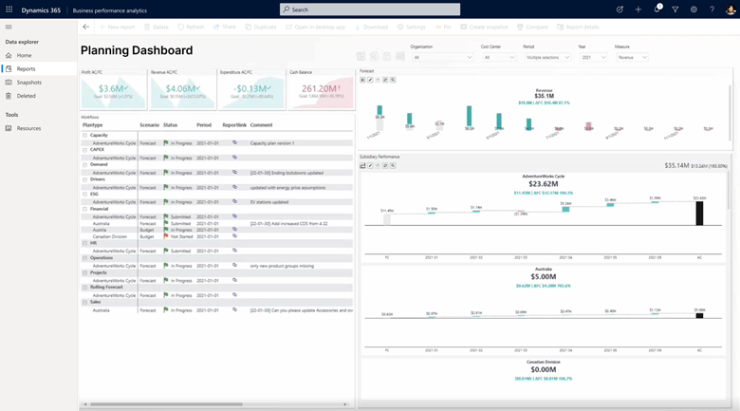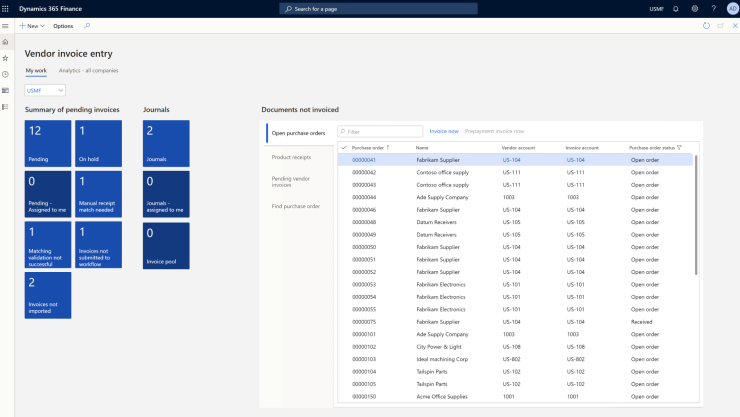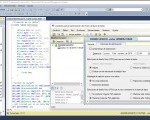
Microsoft Dynamics 365 ERP is a comprehensive solution that integrates financial management, operations, supply chain, and human resources functionalities within a cloud-based environment built on Azure, using the SaaS model. Thanks to its modular architecture, the platform natively connects CRM, Business Intelligence, and productivity applications, enabling the automation of critical processes and real-time access to data for strategic decision-making.
Dynamics includes various solutions, licensed separately but integrated through the integration layer (Dataverse), covering areas such as Sales, Marketing, Customer and Field Service, Finance, Operations, Commerce, and Human Resources.
Microsoft Dynamics 365 ERP offers strong integration across financial, operational, and commercial processes. The solution employs a cloud-first approach, where automation is delivered through a flexible modular structure, adaptable to the specific needs of growing organizations.
The system’s architecture allows for the configuration of custom modules covering areas like accounting, supply chain, and HR management. Native integration with Microsoft tools—such as Office 365, Power Platform (Power Apps, Power Automate), and Power BI—enhances data consolidation and facilitates real-time reporting and predictive analytics. This connectivity reduces reliance on manual processes.
Native integration with Azure services (Logic Apps, Service Bus) further expands the possibilities for orchestrating complex processes and building custom applications.
The solution incorporates artificial intelligence and machine learning capabilities that are natively embedded into workflows, allowing for automation of routine tasks, anomaly detection, and real-time generation of insights without relying on external tools. Automating repetitive tasks and consolidating information fosters a collaborative environment, backed by continuous updates and robust security standards.
In terms of security, data is encrypted in transit and at rest, with multi-factor authentication and role-based access control aligned with standards such as ISO 27001 and SOC 2.
Embedded analytics (Power BI and Data Lake) provide customizable dashboards, ad hoc queries, and alerts—all accessible from a unified interface, reducing the need for separate BI tools.
The infrastructure's flexibility enables integration with external systems and adaptation to different industry sectors, demonstrating high scalability and efficiency in complex environments.
MS Dynamics 365 ERP Features
Financial and Accounting Management
The solution includes specialized modules to simplify financial operations, including tools for managing accounting, bank reconciliations, and accounts payable/receivable. The platform automates routine tasks and consolidates financial data for reporting, enabling detailed tracking of economic performance and budget control throughout each accounting cycle.

Supply Chain Management
The supply chain module optimizes inventory, procurement, and logistics control. Through automated processes and supplier integration, it offers a comprehensive view of material flows. This facilitates stock level monitoring, delivery coordination, and production planning, boosting operational efficiency and reducing wait times across the supply chain.
Customer Relationship Management and Sales
Within the Dynamics ecosystem, dedicated applications support sales, CRM, and marketing management. These tools cover lead acquisition, customer interactions, and business opportunities. Centralized customer data, combined with advanced AI-driven analytics, support precise commercial strategies and the implementation of omnichannel campaigns that enhance customer loyalty and service personalization.
Project and Operations Management
Microsoft Dynamics 365 ERP offers advanced functionality for project planning and execution. Operational modules enable detailed task tracking, strategic resource allocation, and budget/time control. These features help organizations oversee production and operational processes, ensuring coordination in complex environments and optimizing production outcomes.
Human Resources and Talent Management
A key advantage lies in its tools for human capital management, covering payroll, onboarding, performance reviews, and training tracking. By centralizing employee data in a unified environment, the platform supports decision-making around talent retention and development, boosting productivity through integrated data and predictive analytics.
Business Intelligence and Advanced Analytics
Native integration with Microsoft Power BI and other BI tools enables transformation of data into interactive dashboards and reports. This supports real-time analysis, visualization of key metrics, and trend detection via machine learning. The platform thus serves as an ideal resource for forecasting market changes and proactively adjusting business strategies.
Integration and Scalability
Microsoft Dynamics 365 ERP’s modular architecture enables integration with other Microsoft solutions—such as Office 365 and Power Platform—and with external applications via standardized APIs. This ensures flexibility and adaptability in diverse environments, critical for growing businesses needing scalable, customizable solutions tailored to their internal processes and emerging tech challenges.
Strengths and Weaknesses Table
| Strengths | Weaknesses |
|---|---|
| Native integration with the Microsoft suite (Office 365, Power Platform, Power BI), providing a unified application ecosystem. | Steep learning curve due to the complexity of integrated modules and processes. |
| Cloud-based modular architecture on Azure, enabling continuous updates and high global availability. | High licensing and maintenance costs, requiring significant investment for medium and large enterprises. |
| Modular flexibility allowing customization and adaptation to various industries and business processes. | Dependence on stable connectivity, which can impact performance in environments with limited network infrastructure. |
| Embedded AI and analytics capabilities (Power BI, Copilot) that automate processes and provide real-time insights. | Complex integration with legacy systems, posing challenges in migration and infrastructure adaptation. |
| "Base + attach" licensing flexibility optimizing costs for users needing access to multiple applications. | Requires centralized data governance, adding administrative overhead in highly decentralized organizations. |
| Scalability for businesses of all sizes, with specific editions (Business Central, Enterprise). | Limitations in on-premises deployments, since Azure Stack support exists, but lacks the seamless experience of native cloud environments. |
Licensing and Deployment
-
Licensing: Subscription-based (SaaS model). This approach allows flexible system access through monthly or annual fees, optimizing investment and enabling continuous updates.
-
Company size: Primarily targeted at medium to large organizations. While some modules (e.g., Dynamics 365 Business Central) can suit small businesses, the platform’s robustness and feature breadth are designed for complex operations and high transaction volumes.
-
Deployment type: Cloud-based. The solution is deployed in cloud environments, ensuring automatic updates, scalability, and ease of infrastructure management, with the possibility of hybrid scenarios where needed.
References
Official Microsoft Dynamics 365 page: Business Applications | Microsoft Dynamics 365
- Printer-friendly version
- Log in to post comments


 Microsoft SQL Server is Microsoft's classic relational database management system (RDBMS) and one of the best-selling databases on the market.
Microsoft SQL Server is Microsoft's classic relational database management system (RDBMS) and one of the best-selling databases on the market.
